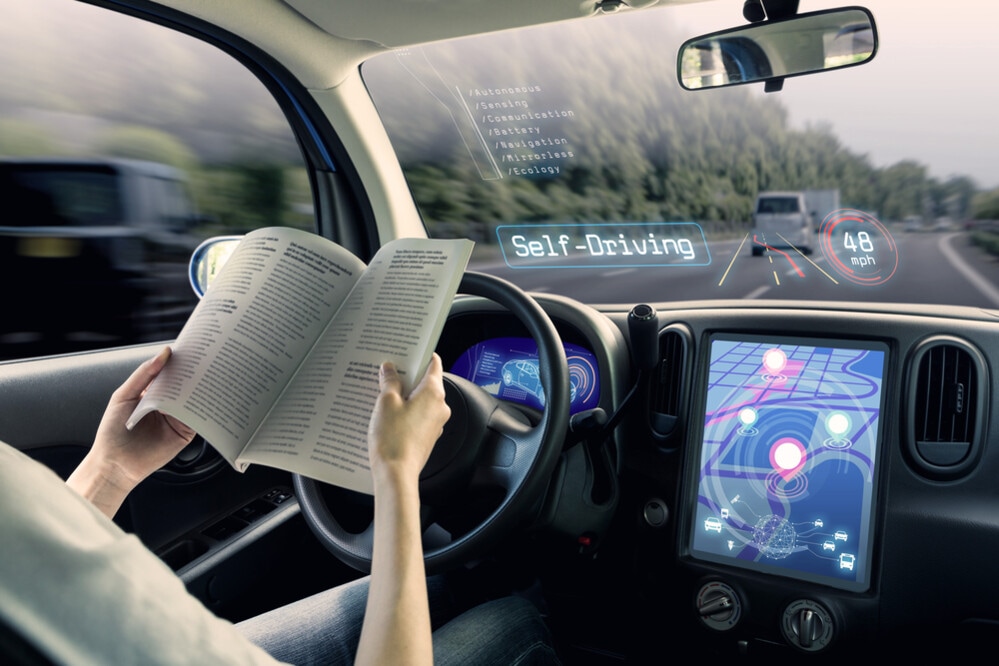The automotive industry is evolving fast thanks to modern technology and AI. Automobile and tech giants have continued to invest their time and considerable resources to develop autonomous self-driving vehicles. Self-driving vehicles are enhanced with capabilities to learn their environment and respond accordingly and drive smoothly.
Here are 13 Interesting facts about Self- Driving vehicles that will help you appreciate autonomous vehicles technology.
-
Ancient Driverless Car Idea Introduced in 1939
Driverless car technology may appear very modern, but General Motors introduced the idea in 1939. In 1958, the company tested a driverless Chevrolet.
-
DARPA Challenge- The Autonomous Vehicle Challenge Since 2004
Autonomous vehicles have participated in a prize competition since the year 2004 through the DARPA challenge. In the first competition, none of the robotics finished the race; hence no winner was awarded. However, Waymo has won several of the DARPA challenges since its inception. Waymo LLC is a Google self-driving company that currently operates self-driving taxi services in Arizona as Waymo One.
-
Ability to Scan Their Environment
Self-driving autonomous vehicles use different types of sensors to sense their environment
Autonomous vehicles use 3D laser scanners, also known as LIDAR, to scan the car’s environment using infrared laser lights. The sensors’ roles may overlap while others remain as backups in case some sensors fail to operate. Other sensors include video camera sensors, Radar sensors, and ultrasonic sensors.
-
They Have Autonomous Emergency Brakes AEB
Autonomous emergency brakes are high-standard safety techniques that scan the road using sensors and complex algorithms and apply emergency brakes when necessary to avoid accidents.
-
Have Blind Spot Detection Capabilities
Blindspot monitoring technology utilizes a 360 degrees’ electronic coverage around the car to detect blind spots. The technology sees where human drivers can’t, thus significantly reducing the chances of accidents around the blindspots.
-
Ability to Keep Pace with The Vehicle in front
Autonomous vehicles use Dynamic Cruise Control systems to accelerate and slow down automatically to keep up with the car in front. The use of Dynamic Cruise Control systems helps avoid rear-end collisions.
-
Controlled Braking of Individual Wheels
Autonomous vehicles have controlled braking on individual wheels that help stabilize and maintain the vehicle control during critical conditions such as slippery roads using the Electronic Stability Control systems.
-
Ability to Enhance Safety through Sensor Fusion
The user of sensor systems and other technologies helps the self-driving vehicle gather information about its surroundings and then uses a sensor fusion process that combines and analyses data sets to make informed driving decisions. The main benefits of sensor fusion include;
- Enhances Safety- most road accidents result from human error; hence, self-driving vehicles make road transport safer.
- Autonomous vehicles offer economic benefits due to a reduction in car collisions that are costly in terms of repairs, loss of life, and property damage.
- Increases mobility to people with disabilities; hence people with disabilities can easily commute to work and become more productive.
-
Have Safety Challenges Due to Poor Visibility
Autonomous cars may not be able to detect objects during bad weather due to poor visibility. The car sensors can be blocked by fog or snow and hence fail to see things in its surrounding accurately. Due to poor visibility, the autonomous vehicle might end up causing harm.
-
Autonomous Vehicles Have Challenges in Making Some Maneuvers
Some data show self-driving vehicles had caused accidents by moving straight forward when they were not supposed to. Self-driving cars also have the challenge of keeping distance during traffic congestion, thus causing accidents.
-
Ability to Provide Bird’s Eye View Maps
Self-driving vehicles may use their 3600 views and develop a bird’s eye view of the car and its surroundings. The bird’s eye view helps make the right decision and resolve issues such as the blindspots. The bird’s eye view also helps maneuver out of a tight spot, either in a traffic jam or close parking.
-
Ability to Behave like Humans
Self-driving vehicles use AI technologies to move from one point to another using essential navigational tools as a human would. Such navigational tools enhanced in autonomous cars include;
- Autonomous cars can develop and read maps of the surrounding areas.
- Planning routes through their environments.
- The vehicles can avoid obstacles such as pedestrians, other cars, and buildings by first detecting them and then avoiding them, ensuring safe travel.
-
There are 6 Levels of Car Automation
Autonomous cars are not all the same; there are different levels of car automation which are;
Full Automation
In this case, no human intervention is necessary. The vehicle may not have a steering wheel or a gas pedal.
High Automation
The vehicles can scan their environments and drive safely but can alert a driver when there are some challenges with self-drive.
Conditional Automation
In this case, the vehicle can self-drive if the weather is good, but the driver must be ready to engage in case of some difficulties.
Partial Automation
Partial automation is a level 2 automation that works well on highways. The vehicle can accelerate and brake, but the driver must be alert in case of an emergency.
Advanced Driver Assistance Systems, ADAS
Driver Assistance is a level one automation where the driver may remove their foot from the pedal. The advanced driver assistance systems may provide adaptive cruise control for the stability of the vehicle.
No Automation Vehicles
No Automation Vehicle is whereby the driver is fully engaged in all driving actions.
Self-driving vehicles are the vehicles of the future for everyone!













Comments